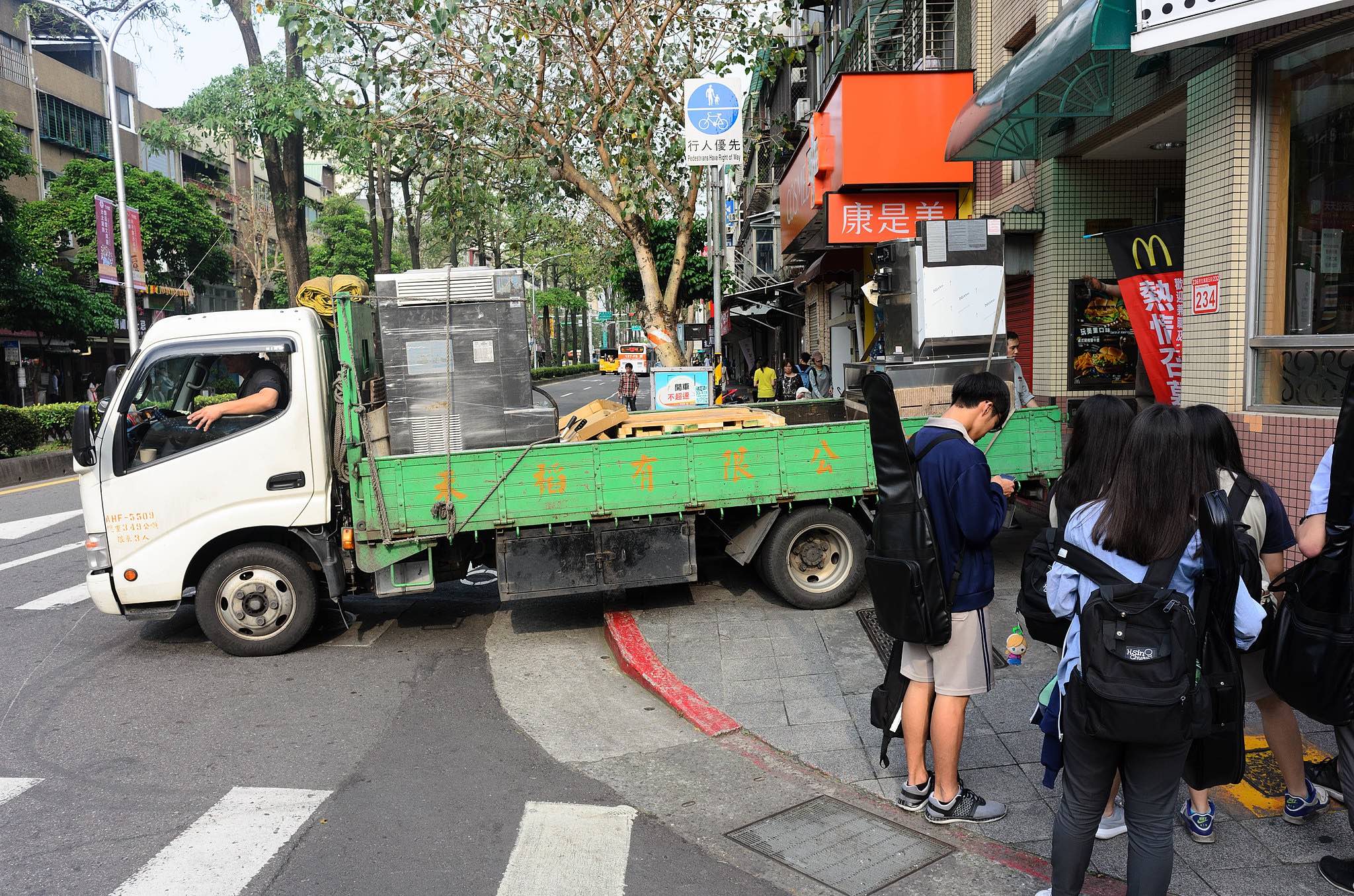Could traditional last-mile logistics finally be undergoing a much-needed transformation?
The way goods and services arrive at the people’s doors has never been more important. Even before the COVID-19 pandemic began, e-commerce was on the rise and so were demands for greater levels of service and convenience from consumers. However, such demands come at a cost.
The challenges of freight transport can be seen most clearly in urban centers. In the logistics supply chain, the last-mile – which is almost always in or near a city. This means that cities bear the brunt of the emissions as well as the health challenges due to air pollution and heavy traffic from delivery fleets.
In the Daxi Commercial District of Taoyuan, Taiwan, the challenges of urban freight are clearly on display. The historic old town, Daxi’s narrow streets, unique architecture and exquisite wooden features make it a charming and popular neighborhood for locals and tourists alike.
Unfortunately, the narrow old streets can no longer bear the increasing demands of traffic – especially logistics.
As a busy mixed-use district with commercial, residential areas and public space covering 30 hectares, there are many needs to be met. High demand for goods from the retail shops and lack of loading/unloading and parking space within this district are a big concern for both the shop owners and the carriers who often enter with delivery trucks and vans. Residents here often complain of poor air quality, congestion and noise pollution.
At the moment, the city imposes pedestrian areas during public holidays and weekends to provide more space for visitors but there is still a strong demand for high-quality public space, efficient delivery and clean air. Small lockers for post-delivery and self-collection are also provided here and subsidies for low emission vehicles are also offered. However, the number of deliveries and tourists in this area continues to increase.
With the challenges at hand, the Taoyuan decided to integrate ecologistics planning to enhance livability in Daxi. They also hope to use the Daxi project to showcase ecologistics in a busy commercial and residential district, while also focusing on the development of sustainable logistics solutions for the last mile. For this reason, the city government selected Daxi as one of five projects in a larger, more ambitious EcoLogistics program Taoyuan is undertaking.
What Daxi Residents Envision for Their Neighborhood
Prior to implementation of the project, the city organized more than 30 meetings with local businesses, leaders, residents, logistics companies, and other stakeholders. They hoped that by starting with local needs, they could develop a suitable strategy.
After considering the needs of all parties, the first solution the city government proposed was shared logistics and warehousing with low-carbon quiet transfer stations and traffic quiet areas. The distribution hub is to allow the logistics providers/drivers to drive the trucks to the transfer station to unload the goods, and then use low-carbon vehicles for delivery to various blocks. In order to reduce the impact of trucks on the surrounding traffic.
The second solution they proposed was traffic management and control. A traffic quiet zone is planned to be set up around the Daxi zone. Speed limit signs for trucks and supporting traffic control will be installed in the zone to reduce vehicle speeds, honking and noise reduction. There are also plans to integrate pedestrian and vehicular routes to improve the traffic environment for primary school children in neighboring countries and enhance the quality of local life.
Another part of their strategy was the promotion of low-carbon transportation. The city government set up a distribution hub and a special parking space for trucks. The solar-powered distribution hub functions as a warehouse and a parking zone. After the logistics industry unloads the goods at the transfer station, they are then delivered by low emission freight vehicles such as electric tricycles and Follow-me autonomous robots.
Related Articles: Empowering Local Leaders in the Fight Against Climate Change | Taxing Pollution, Not People
Finally, as Daxi represents the last-mile distribution base, and is also the site where the logistics industry is closest to the city and consumers, the city decided to implement a smart receipt strategy. This strategy integrates sustainable logistics and delivery services to connect complex consumption. It can set up smart/self-pickup counters that combine other services (such as gas stations, shared smart logistics cabinets for convenience stores), and provide 24-hour self-service pickup/mailing services.
Through this intervention, Taoyuan hopes to reduce carbon emissions, improve road congestion, road safety, and quietness in the old streets of Daxi. The city will be unveiling the Daxi demonstration project at a press conference on 3 December 2020.
More About Taoyuan City
In an area where 1,800 logistics companies handle over 100 billion USD worth of industrial shipments per year, Taoyuan has developed an ambitious EcoLogistics program. The city aims to use the integration of technology, policies, and planning as a vehicle for environmental, social and economic sustainability in the urban freight sector.
In their capacity as the Chair of the ICLEI EcoLogistics Community, Taoyuan has established five ecologistics demonstration projects in order to bring back lessons learned and successful strategies to the international community. These demonstration projects have been selected in a variety of locations in the city, allowing for testing of various ecologistics solutions in different environments.
— —
About the Author: Evérica Rivera is a Project Communication Officer at ICLEI.
Editor’s Note: The opinions expressed here by Impakter.com columnists are their own, not those of Impakter.com. — In the Featured Photo: Truck unloading ice cream machines in Taiwan. Featured Photo Credit: Wikimedia Commons











